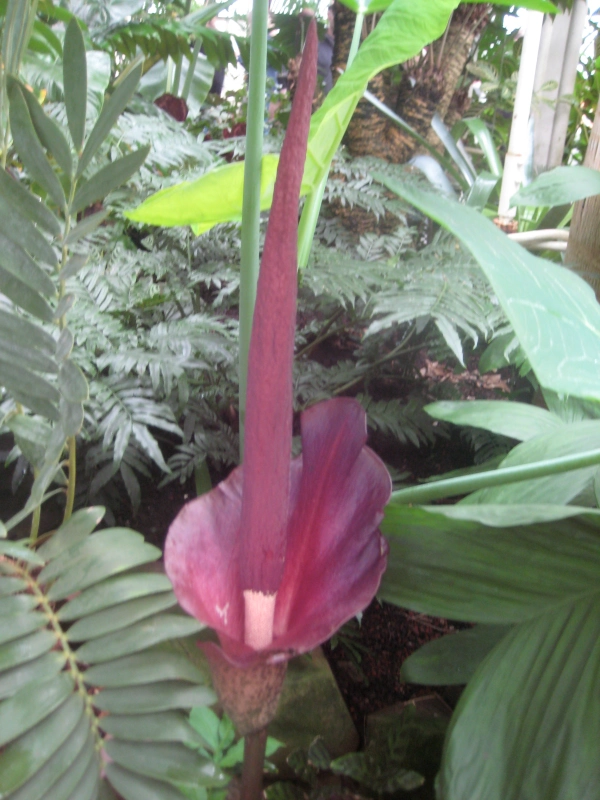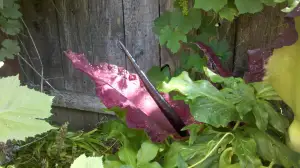Common Name: Voodoo Lily, Devil’s Tongue
Amorphophallus konjac
Family: Araceae
It’s worth noting that “Voodoo Lily” is a name given to more than one plant, including Sauromatum venosum—which is the Voodoo Lily featured here.
Height: 18-24″ (can sometimes grow larger)
Hardiness: To about 10 degrees Farenheight
Plant in shade in sunnier climates, prefers more sun in foggier or cooler climates. Keep outdoors when blooming if you don’t want your house to smell like a toilet.
The Devil’s Tongue or the Voodoo Lily (Amorphophallus konjac) is lush in appearance but one whiff and you’ll soon know why it has an association with the Devil. Like the Corpse Flower A. konjac is pollinated by carrion beetles and flies, who are attracted to its rotten-flesh-like scent.
How best to describe the smell? Acrid, cloying—like the body of a roadkill animal left in the noonday sun. A touch sulfuric. This is the kind of smell you can’t quite place but you know you have smelled it before. It is the smell of decay. If you haven’t had a lot of experience with corpse sniffing, a more common comparison is the smell of flowers left too long in a vase. That scent, when the water is putrid, is the essence of what a Voodoo Lily smells like.
The konjac grows from a starchy “bulb” (a tuber) which can be harvested for food. It produces a thickening agent that can be used as a vegan substitute for gelatin. It’s frequently used in Lychee fruit cups. In fact, a quick google search will lead you to a number of products that feature konjac. Fiber-rich vitamin supplements are made from the tuber, and thought to promote healthy digestion and weight loss. The tuber is used in soups and stews, and you can even buy konjac flour. However, parts of the plant are known to be poisonous.
Updated July 2023
—Amber Guetebier







